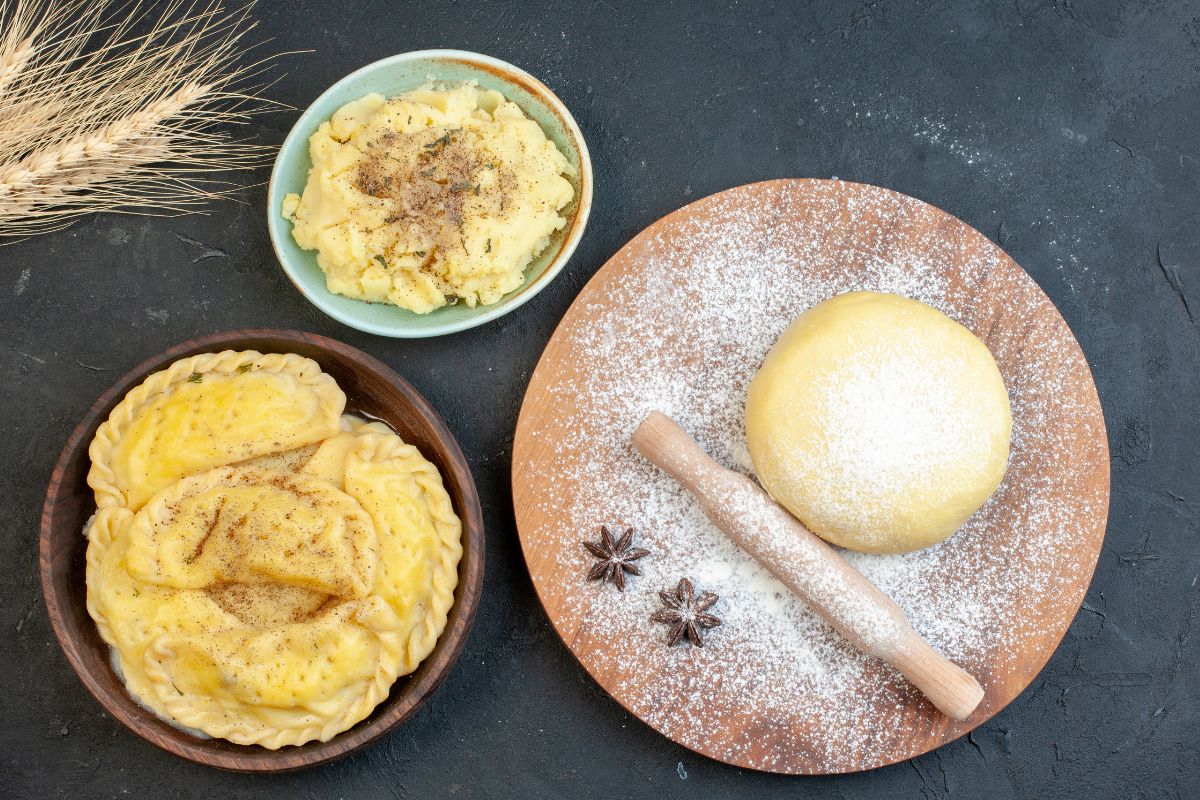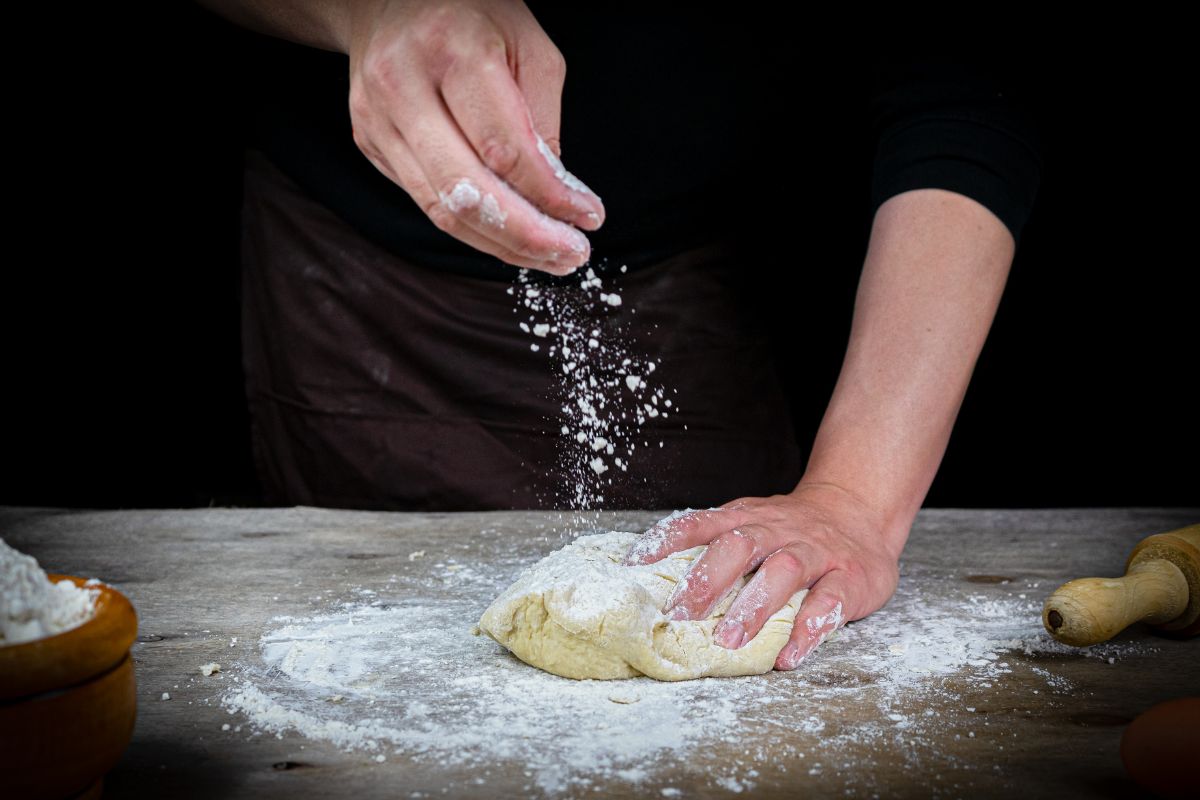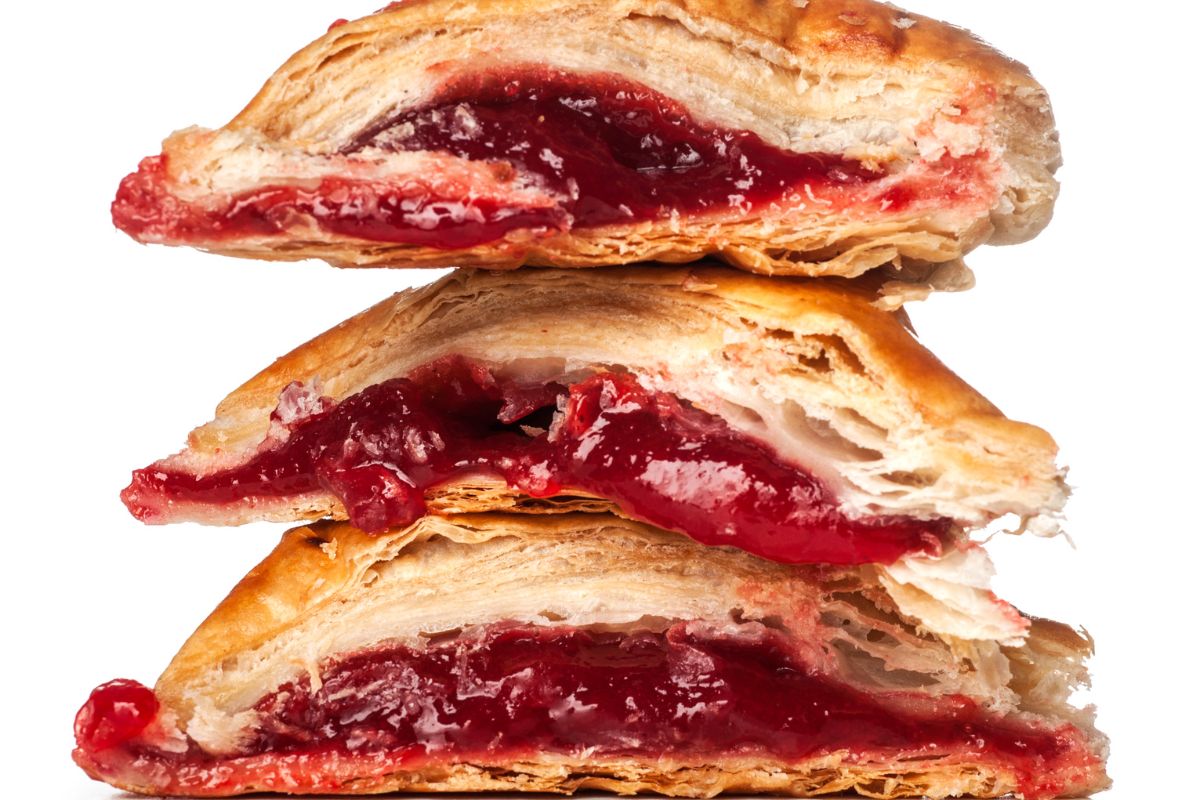Making pie dough is one of those things that seems really hard, just like making pasta from scratch, but both are actually really easy with a little love and attention.

Basically any dough whether it’s for pizza, pasta, or a pie, is essentially a combination of a liquid with fat and flour, these are your variables that change.
In terms of technique there isn’t really anything involved that a child couldn’t do.
In this article we are going to cover pie dough, the savory kind you might use for empanadas, pasties, hand pies, or as a top for a meat pie. Keep reading to find out how we did it.
Ingredients
Here’s the short list of ingredients you will need. There are some swaps you can make depending on the outcome you want, but you can still make great pie dough.
We would wager you already have most of these ingredients already.
These ingredients will make enough dough for 12 hand pies or enough for a whole pie crust. Scale up or down as you see necessary.
- 3 cups of flour
- 4 oz of fat – butter, vegetable shortening, or lard
- Salt
- 1 Egg
- Water
Method For Pie Dough
As you can see these ingredients are really easy to come by, and cheap.
It’s been passed down from generations of peasants who made pie dough from the ingredients that were abundant on the farm, and the method hasn’t changed much either.
- Add your flour and a good handful of salt into a large bowl. In some cultures they may add baking soda to make the pastry more fluffy but that’s up to you, we don’t think it’s super necessary.
- Cut up your fat of choice into smaller chunks and then add it to the flour
- We want to disperse the butter in chunks throughout the flour. You can do this by rubbing your forefingers together and creating crumbs of flour and butter, or you can use a normal dinner knife and simply chop it up this way. The professional way to do it would be if you had a sturdy potato masher or pastry cutter but there’s no reason to buy these tools simply for this, but are good to have if you plan on making this dough a lot. The goal here is to achieve a bread crumb consistency where no large chunks of butter remain.
NOTE: While the amount of fat suggested (whichever you choose) is totally fine, you could add near double and it would sure taste good but this would make the dough harder to work with and more sticky and is best reserved for when you are comfortable with the dough recipe itself.
- Next add an egg and just enough cold water to make the dough come together. Add a small amount of water first for safety as you can add more in as you feel it needs, ideally no more than a cup. Make sure to break the yolk first before you mix it. It’s totally fine to use the same butter knife from before to mix the dough up while it’s wet. It’s easier to get the dough off of the knife than a wooden spoon.
NOTE: A pro tip here, if you have it laying around, is to use white wine in place of water. The acidity brings a pleasantly sweet or sour note to the pie crust that is tasty and regularly used in French kitchens.
The alcohol may even make the crust more tender, but it’s mainly for flavor. Although the water is totally fine.
Kneading: To Knead Or Not To Knead?

French cooking practice would suggest that pie dough requires as little kneading as possible. A similar technique that you would employ for biscuits or scones.
It is true that this would result in a more crumbly texture to your pie dough in the end.
However, while most recipes would suggest that you do this, it can actually totally depend on what you use this dough to create.
If you are making hand pies or empanadas, most Latin traditions actually suggest that you knead the dough for around five minutes.
This develops the gluten a little and results in a dough that is way easier to work with. If you didn’t knead the dough you would have a nightmare trying to wrap the dough around anything when crumbly.
Kneading makes the dough more workable and is totally fine with something like a hand pie that requires you to wrap the dough around something.
Whereas if you were making something like an open top quiche, you can totally leave it really crumbly as described, rather than kneading it, and this will result in a more shortcrust pastry kind of feel.
That said, the dough is a lot harder to work with and hotels and leaks may be more common.
To knead the dough simply bring it together in the bowl into a somewhat cohesive mass and then put it on a lightly floured table top surface.
Simply press all your weight into your palms on the dough and push it out, then gather it all back up and repeat.
You don’t need to do this for more than 5 minutes, just until you get a more cohesive ball of dough.
NOTE: One important step, if you want a dough that is easier to work with, is to let the dough rest for around half an hour in your fridge.
This lets the flour ‘hydrolyze’ which just means the once dry flour particles need some time to absorb the liquid and fat.
Final Thoughts
And there you have it, this dough is ready to use after resting for around half an hour. You can use this to make empanadas, hand pies, and savory pies of all kinds.
You can make the dough vegan by using vegetable shortening, or you can use more butter for extra flavor, although this makes the dough harder to work with.
- How To Reheat A Cheesesteak - November 5, 2023
- What Are Three Must Have Kitchen Knives? - September 22, 2023
- How To Protect Edges Of Pie Crust - June 15, 2023








